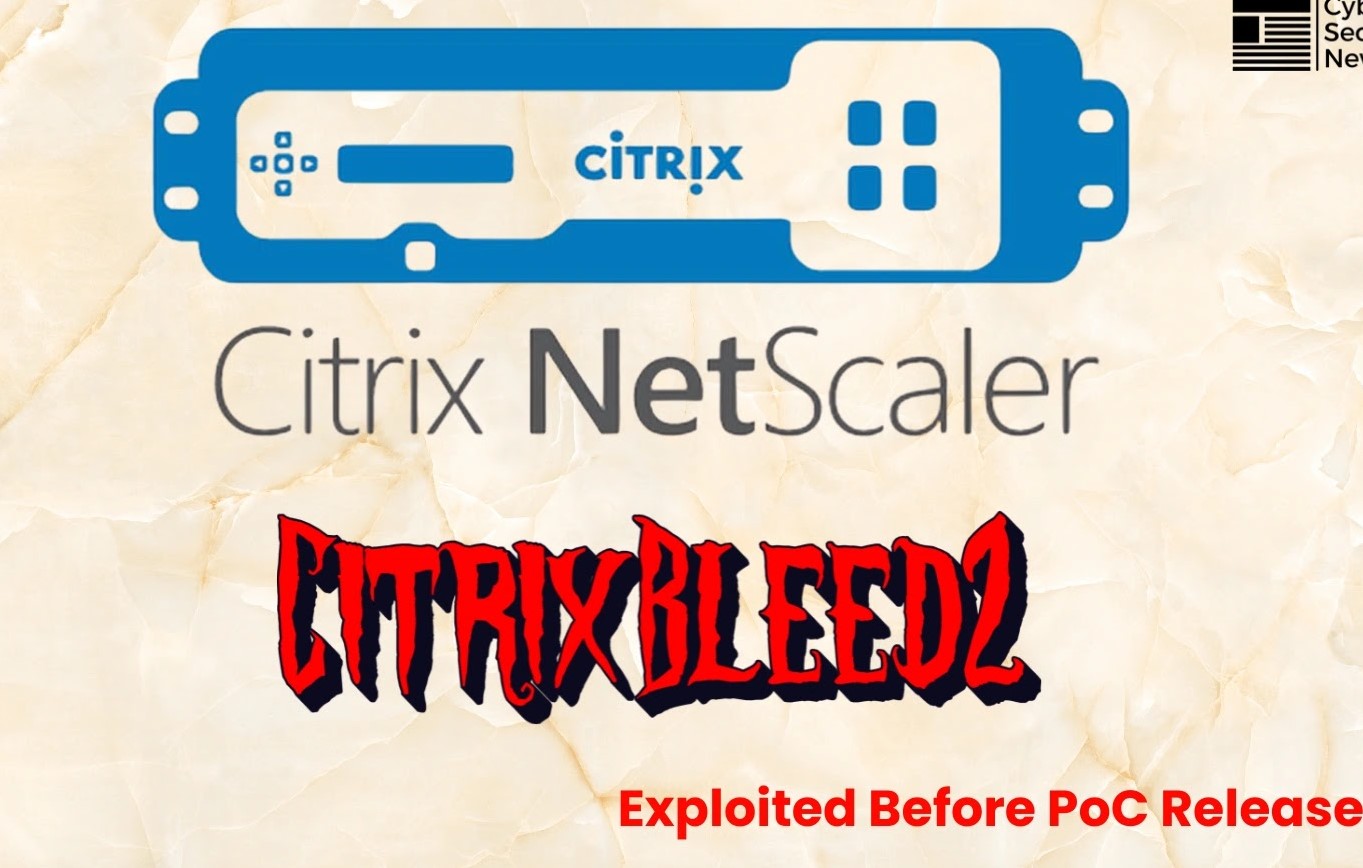
Hackers Started Exploiting CitrixBleed 2 Vulnerability Before Public PoC Disclosure
The Alarming Truth: CitrixBleed 2 Exploited Before Public Disclosure
In the relentlessly evolving landscape of cyber threats, the proactive exploitation of vulnerabilities before their public unveiling is a chilling reality. This concerning trend has once again manifested with the discovery of active attacks leveraging CitrixBleed 2, formally identified as CVE-2025-5777. What makes this incident particularly alarming is that adversaries were observed exploiting this weakness nearly two weeks before a public Proof-of-Concept (PoC) even surfaced, underscoring the speed and sophistication of modern threat actors.
This early exploitation highlights a critical challenge for organizations: the shrinking window between vulnerability discovery and active weaponization. Understanding the mechanics of CitrixBleed 2 and implementing swift mitigation strategies are paramount for safeguarding sensitive data and preserving operational integrity.
Understanding CVE-2025-5777: The CitrixBleed 2 Vulnerability
CVE-2025-5777, dubbed “CitrixBleed 2,” is a severe memory overread vulnerability impacting Citrix NetScaler appliances. Specifically, this flaw resides in the handling of DTLS (Datagram Transport Layer Security) packets.
A memory overread vulnerability occurs when a program attempts to read data beyond the boundaries of an allocated memory buffer. In the context of CitrixBleed 2, by crafting and sending specially malformed DTLS packets, an attacker can trick the vulnerable NetScaler appliance into reading and subsequently exfiltrating sensitive data directly from its kernel space. Kernel space contains highly privileged information, including cryptographic keys, session tokens, and other critical system data, making its compromise potentially catastrophic.
The Pre-PoC Exploitation Timeline
The timeline of CitrixBleed 2’s exploitation paints a stark picture of advanced attacker reconnaissance. Researchers first detected initial reconnaissance and active exploitation patterns as early as June 23. This critical observation predates the public availability of any Proof-of-Concept for CVE-2025-5777 by nearly two weeks. Such pre-disclosure exploitation often indicates that sophisticated threat groups, potentially state-sponsored actors or highly resourced criminal enterprises, have dedicated resources to zero-day research or have access to private vulnerability intelligence.
The speed with which these attackers moved from initial discovery to active weaponization underscores the need for organizations to maintain robust threat intelligence feeds and prioritize patch management for critical infrastructure components like NetScaler appliances.
Impact and Potential Consequences
The exploitation of CVE-2025-5777 carries significant risks for affected organizations:
- Data Exfiltration: The primary consequence is the unauthorized exfiltration of sensitive data from the kernel space. This could include user credentials, authentication tokens, session data, configuration files, and even proprietary business information.
- Session Hijacking: With access to session data, attackers can potentially hijack legitimate user or administrator sessions, gaining unauthorized access to internal networks and applications.
- Lateral Movement: Exfiltrated credentials or session data can be used to facilitate lateral movement within a compromised network, escalating privileges and expanding the scope of the attack.
- Compliance and Reputational Damage: Data breaches resulting from such vulnerabilities can lead to severe regulatory fines, legal liabilities, and significant reputational harm.
Remediation Actions
Immediate action is required for organizations operating Citrix NetScaler appliances to mitigate the risks posed by CVE-2025-5777. The following steps are crucial:
- Apply Patches Immediately: Monitor official Citrix security advisories diligently. As soon as a patch for CVE-2025-5777 is released, prioritize its deployment across all affected NetScaler appliances. Delaying patch application significantly increases exposure.
- Review Logs for Anomalies: Scrutinize logs from NetScaler appliances for any signs of unusual DTLS traffic, elevated memory usage, or suspicious access patterns that coincide with the pre-PoC exploitation window (starting June 23).
- Network Segmentation: Ensure that NetScaler appliances are properly segmented from critical internal networks. This limits an attacker’s ability to move laterally even if the appliance is compromised.
- Implement Strong Authentication: Enforce multi-factor authentication (MFA) for all administrative access to NetScaler appliances and linked systems.
- Least Privilege Principle: Adhere to the principle of least privilege for all user accounts and services interacting with NetScaler appliances.
- Regular Penetration Testing: Conduct regular penetration tests specifically targeting your external-facing infrastructure, including Citrix NetScaler deployments, to identify and remediate vulnerabilities proactively.
Detection and Mitigation Tools
Leveraging appropriate tools can significantly aid in the detection of exploitation attempts and the overall security posture:
| Tool Name | Purpose | Link |
|---|---|---|
| Network Intrusion Detection/Prevention Systems (NIDS/NIPS) | Detect and block malformed DTLS packets and suspicious network activity. | Snort, Suricata |
| Security Information and Event Management (SIEM) Systems | Centralize and analyze logs from NetScaler and other network devices for anomalies and indicators of compromise (IOCs). | Splunk, Elastic Security (SIEM) |
| Vulnerability Scanners | Identify unpatched Citrix NetScaler instances and other potential weaknesses. | Nessus, InsightVM |
| Packet Analyzers | For deep-dive analysis of network traffic to identify suspicious DTLS communications. | Wireshark |
Conclusion
The early exploitation of CitrixBleed 2 (CVE-2025-5777) stands as a stark reminder of the escalating precision and speed of cyber adversaries. Organizations must move beyond reactive patching and embrace a proactive security posture centered on continuous monitoring, robust incident response planning, and immediate application of security updates. The integrity of critical infrastructure like Citrix NetScaler appliances is non-negotiable; vigilance and swift action are the only effective defenses against such sophisticated threats.





